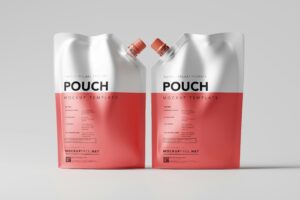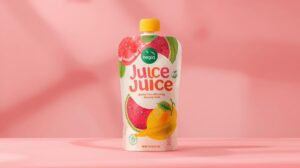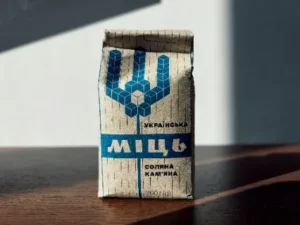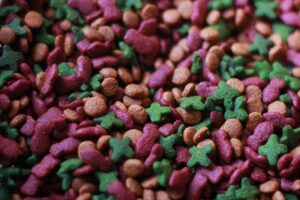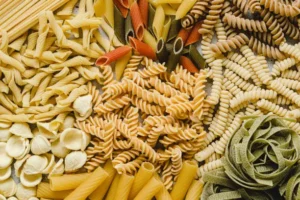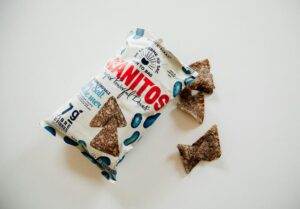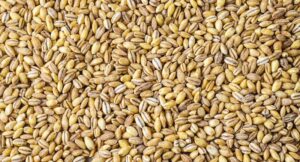L'industrie manufacturière est l'une des industries de base les plus importantes du pays et en constitue le fondement. Elle est la machine mère de nombreuses industries de fabrication mécanique, et son niveau de développement est directement lié à la capacité de production et à la précision de fabrication de l'industrie manufacturière, qui est elle-même liée au niveau de développement de l'industrie nationale des machines, voire de l'industrie manufacturière dans son ensemble. Elle est le support fondamental des technologies de fabrication avancées, et la qualité, la rapidité de mise à jour, l'adaptabilité au marché, l'efficacité de la production, etc. des produits mécaniques dépendent largement de leur efficacité. Par conséquent, l'industrie manufacturière joue un rôle crucial dans le développement économique d'un pays. La Chine est le pays affichant la plus forte production au monde. Selon les statistiques de l'Association industrielle allemande (VDW) de 2000, la Chine se classe au cinquième rang mondial parmi les principaux pays producteurs. Cependant, sa concurrence reste relativement faible sur le marché international : même sur le marché intérieur, elle est confrontée à une situation difficile : d'une part, la demande pour divers produits sur le marché intérieur est importante, et d'autre part, de nombreuses pressions de stagnation intérieures inondent le marché de produits étrangers.
Classification et fonction de l'emballage
Il existe de nombreuses méthodes de classification des emballages. Selon le domaine de circulation des produits, on distingue les emballages industriels et les emballages commerciaux. Selon la structure de l'emballage, on distingue les emballages intérieurs et les emballages extérieurs. On peut également classer les emballages selon la variété des matériaux ou contenants, le nom de l'objet ou de l'article, etc. La classification selon la structure de l'emballage est pertinente. L'emballage intérieur est une forme de structure d'emballage de base, qui comprend l'emballage direct et l'emballage intermédiaire. L'emballage direct est une forme d'emballage qui enveloppe ou charge directement les produits à l'aide de matériaux ou de contenants : le matériau ou le contenant est en contact direct avec l'article emballé et constitue la plus petite unité d'emballage. Lors d'un emballage direct, il est nécessaire de sélectionner les matériaux ou contenants, de développer des procédés d'emballage et de choisir ou de concevoir les machines et équipements d'emballage en fonction des propriétés physiques des articles emballés et des exigences d'emballage. L'emballage intermédiaire est une forme d'emballage dans laquelle un certain nombre de produits directement emballés sont combinés puis reconditionnés. Par exemple, l'emballage d'articles en boîtes après mise en bouteille ou en sachet ; l'emballage en bande après l'emballage de paquets de cigarettes ; L'emballage des articles de dentifrice après le scellage et le scellage du tube.
Avec la diversification des besoins des consommateurs, notamment le développement des supermarchés, l'importance de l'emballage intérieur est devenue de plus en plus cruciale. La demande en machines et équipements nécessaires à sa réalisation est la plus forte dans le secteur de l'emballage. L'emballage extérieur est une structure d'emballage dans laquelle une certaine quantité de produits, après conditionnement interne, est découpée en boîtes. De nos jours, les boîtes en carton ondulé sont couramment utilisées. L'objectif principal de l'emballage intérieur est de promouvoir les ventes et d'offrir un confort d'utilisation aux consommateurs. Lors de la conception de l'emballage, outre le respect des exigences en matière de matériaux et de quantité, l'importance de la décoration doit également être soulignée. L'emballage extérieur a pour objectif principal d'assurer la circulation, le stockage et le transport, ce qui nécessite un emballage robuste et résistant.
L'emballage est une mesure de protection appliquée au matériau emballé, dont l'objectif principal est de préserver la valeur d'usage du produit. Par conséquent, lors de l'emballage, il convient également de prendre en compte la commodité du transport, du chargement et du déchargement, du stockage et de la vente des articles en circulation. De plus, la décoration de l'emballage joue également un rôle dans l'embellissement, la promotion et la vente. Le traitement de l'emballage est l'étape finale de la production et un maillon important et incontournable de l'amélioration de la valeur marchande des produits.
Orientation de développement des machines d'emballage
Actuellement, les principaux pays exportateurs d'équipements d'emballage et de machines sont les États-Unis, l'Allemagne, le Japon, l'Italie et le Royaume-Uni. L'Allemagne occupe une position de leader en matière de conception, de fabrication et de performances techniques. En 2002, la valeur de la production allemande de machines d'emballage a atteint 3,4 milliards d'euros, dont 771 tonnes destinées à l'exportation. Ces dernières années, le développement des équipements d'emballage et des machines dans ces pays a montré de nouvelles tendances.
Nouvelles tendances dans la conception de machines d'emballage en Allemagne
L'Allemagne, tout comme les États-Unis, le Japon et l'Italie, est un acteur majeur du secteur des machines d'emballage. Nous occupons une position de leader en matière de conception, de fabrication, de performances techniques et autres aspects de nos machines. La conception des machines d'emballage allemandes s'appuie sur des études de marché et des analyses, afin de satisfaire au mieux les clients, notamment les grandes entreprises. Pour répondre aux exigences de leurs clients, les fabricants et les bureaux d'études allemands ont mis en place diverses mesures :
(1) Le degré d'automatisation des processus augmente afin d'améliorer la productivité et la flexibilité des équipements. Un bras robotisé permet d'effectuer des mouvements complexes. Pendant le fonctionnement, sous le contrôle d'une caméra pilotée par ordinateur pour capturer les informations et surveiller, le bras robotisé exécute les actions prescrites selon les instructions de l'ordinateur afin de garantir la qualité de l'emballage.
(2) Améliorer l'efficacité de la production, réduire les coûts de production et maximiser la satisfaction des exigences de production. German Packaging Machinery est reconnu pour son expertise dans le domaine des machines de remplissage et de conditionnement de boissons et de bières, caractérisées par une cadence élevée, des ensembles complets, un haut degré d'automatisation et une excellente fiabilité. Sa vitesse de remplissage de boissons atteint 120 000 bouteilles/h, et celle de conditionnement de petits sacs, 900 sacs/min.
(3) Intégrer les machines de production et les machines d'emballage. De nombreux produits nécessitent un emballage direct après production afin d'améliorer l'efficacité de la production. Les équipements de production et d'emballage de chocolat fabriqués en Allemagne sont contrôlés par un système. La clé de l'intégration des deux est de résoudre le problème de l'adéquation des capacités de production.
(4) S'adapter aux changements de production, avec une bonne flexibilité et adaptabilité. En raison de la forte concurrence sur le marché, le cycle de mise à jour et de remplacement des produits est de plus en plus court. Si la production de cosmétiques change tous les trois ans, voire tous les trimestres, et que le volume de production est important, il est nécessaire que les machines d'emballage soient flexibles et adaptables, afin que leur durée de vie soit bien supérieure à celle du produit, afin de répondre aux exigences économiques.
(5) L'utilisation généralisée des techniques de conception par simulation informatique. Avec l'accélération continue du développement de nouveaux produits, la technologie de conception par simulation informatique est largement utilisée dans la conception de machines d'emballage allemandes, réduisant considérablement le cycle de développement et de conception de ces machines.
La conception des machines d'emballage ne doit pas se concentrer uniquement sur leur capacité et leur efficacité, mais aussi sur leur rentabilité. Cette rentabilité ne se limite pas au coût de l'équipement mécanique lui-même, mais surtout à ses coûts d'exploitation. En effet, l'amortissement des équipements ne représente que 61 à 81 TP3T du coût, le reste étant constitué des coûts d'exploitation.
État de développement et tendances des machines d'emballage domestiques
L'industrie des machines d'emballage en Chine a débuté dans les années 1970 et s'est développée rapidement à la fin des années 1980 et au milieu des années 1990. Elle est devenue l'une des 10 premières industries de l'industrie des machines, obtenant des résultats remarquables tant en termes de production que de variété. Ces réalisations ont apporté un soutien solide au développement rapide de l'industrie de l'emballage en Chine.
La Chine est aujourd'hui l'un des principaux pays producteurs et consommateurs mondiaux de machines d'emballage. En tant que produit, la définition des machines d'emballage ne se limite pas à la signification matérielle du produit lui-même, mais englobe également trois niveaux de signification : les produits formels, les produits invisibles et les produits étendus. Les produits formels désignent la forme spécifique et les fonctions de base de la machine d'emballage elle-même ; les produits invisibles désignent l'utilité réelle fournie par les machines d'emballage aux utilisateurs ; les produits étendus désignent l'assurance qualité, les conseils d'utilisation et le service après-vente des machines d'emballage. La conception des machines d'emballage doit donc inclure : l'étude de marché, la conception schématique, la conception structurelle, les plans de construction, la rédaction du manuel d'utilisation et le plan de service après-vente, etc.
Les principales catégories de conception de machines d'emballage comprennent : la conception par simulation topographique et cartographique, la conception de développement, la conception d'amélioration et la conception en série. La capacité de production d'une ligne de remplissage de bière est comprise entre 16 000 et 40 000 bouteilles par heure, et le nombre de vannes de remplissage varie de 48, 60, 90 à 120, ce qui correspond à la conception en série. La transition d'une ligne de remplissage de bière classique à une ligne de remplissage de bière pression relève de la conception d'amélioration et de développement. Pour les machines d'emballage fonctionnant à moyenne et basse cadence, nous pouvons actuellement réaliser une conception indépendante.
Les machines d'emballage à grande vitesse, en particulier certains modèles avancés, sont généralement étudiées et copiées sur des modèles étrangers similaires pour la conception nationale et en série. La principale raison est la suivante : (1) la plupart des concepteurs ne maîtrisent pas pleinement les méthodes de conception avancées, telles que la théorie et les méthodes de conception dynamique des machines d'emballage à grande vitesse, et ne peuvent ni simuler ni résoudre des problèmes tels que l'analyse de la précision dynamique des mécanismes dans des conditions de travail à grande vitesse ; (2) l'intégration entre l'industrie, le monde universitaire et la recherche est insuffisante, et les acquis de la recherche scientifique théorique ne peuvent être appliqués rapidement à la conception pratique. Les concepteurs manquent de formation technique en temps opportun. (3) l'ensemble du secteur manque de régulation macroéconomique, et les ressources avantageuses ne peuvent être allouées et ajustées de manière raisonnable.
Dans le domaine de la conception de machines d'emballage, la grande majorité des concepteurs utilisent encore les méthodes de conception antérieures : (1) recherche de modèles similaires comme prototypes à partir du cahier des charges de conception ; (2) consultation des prototypes pour développer divers indicateurs de performance technique et domaines d'utilisation ; (3) conception du schéma de principe de fonctionnement et du schéma du système de transmission ; (4) conception des composants et pièces clés ; (5) conception du schéma de dessin d'assemblage et du diagramme du cycle d'action : (6) conception des dessins de composants, des dessins d'assemblage et des dessins de pièces ; (7) réalisation de contrôles de résistance et de rigidité des composants clés de l'assemblage principal ; (8) conception des schémas de contrôle, des dessins de construction, etc. De nos jours, certains logiciels de conception des universités nationales permettent d'effectuer des analyses par éléments finis et des conceptions optimisées sur les mécanismes couramment utilisés dans les machines d'emballage. Leurs logiciels de CAO/FAO pour les mécanismes de liaison à came permettent déjà aux entreprises de concevoir elles-mêmes des mécanismes de liaison à came, mais leur application à la conception de machines d'emballage réelles n'est pas encore répandue. Les nouvelles machines d'emballage sont souvent un dispositif intégré associant machines, électricité et gaz. En exploitant pleinement les dernières avancées en matière de produits informatiques et en adoptant des technologies de transmission séparées telles que les actionneurs pneumatiques et les servomoteurs, la chaîne de transmission de l'ensemble de la machine peut être considérablement raccourcie, la structure considérablement simplifiée et la précision et la vitesse de travail nettement améliorées. L'une des technologies clés est l'utilisation d'une commande synchrone entraînée par plusieurs moteurs. En réalité, la maîtrise de cette technologie n'est pas difficile, mais certains concepteurs ne comprennent pas le développement des machines d'emballage. Si, par le passé, la conception de machines d'emballage en Chine en était au stade de l'imitation et de l'apprentissage, nous devons aujourd'hui adopter une conception innovante.

Les avancées technologiques et mécaniques de l'industrie chinoise de l'emballage ces dernières années sont remarquables. L'industrie a débuté à la fin des années 1970 avec une production annuelle de seulement 70 à 80 millions de yuans et une centaine de variétés de produits. Le niveau technique est également relativement faible. Ce n'est qu'entre le milieu des années 1980 et le milieu du XXe siècle qu'un développement rapide a été atteint, avec un taux de croissance annuel de 20% à 30%. Fin 1999, on comptait 40 grandes catégories de machines d'emballage et 1 700 variétés. En 2000, la valeur de la production a atteint 30 milliards de yuans, et le niveau technologique a également atteint un niveau supérieur. La tendance à la production d'échelle et à l'automatisation a commencé à émerger, ainsi que des équipements à transmission complexe et à fort contenu technologique. De nombreuses machines d'emballage, telles que les remplisseuses de liquides, ont commencé à être exportées par lots.

